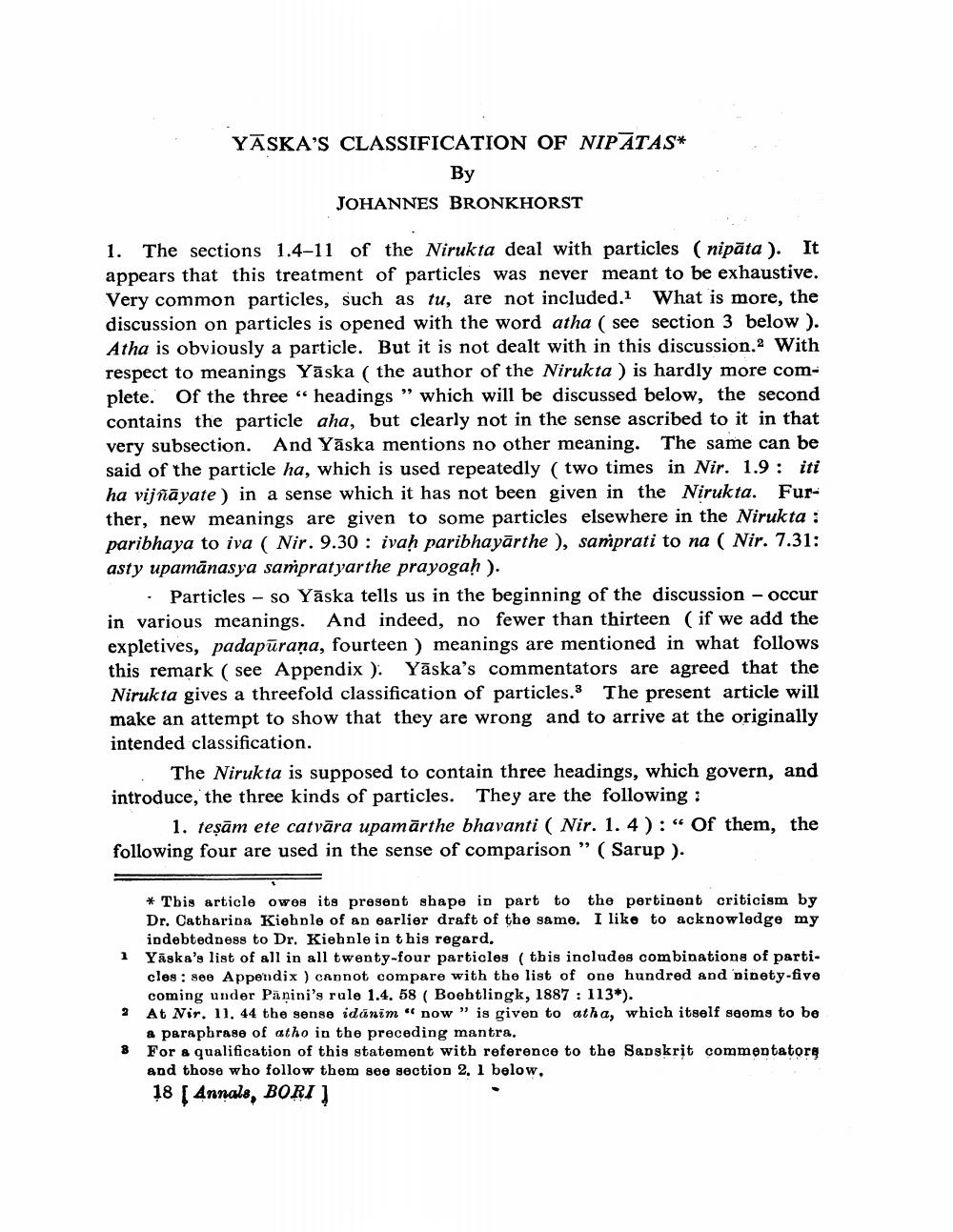Book Title: Yaskas Classification Of Nipatas Author(s): Johannes Bronkhorst Publisher: Johannes Bronkhorst View full book textPage 1
________________ YĀSKA'S CLASSIFICATION OF NIPĀTAS* By JOHANNES BRONKHORST 1. The sections 1.4-11 of the Nirukta deal with particles (nipāta ). It appears that this treatment of particles was never meant to be exhaustive. Very common particles, such as tu, are not included. What is more, the discussion on particles is opened with the word atha ( see section 3 below). Atha is obviously a particle. But it is not dealt with in this discussion.2 With respect to meanings Yaska ( the author of the Nirukta ) is hardly more complete. Of the three “ headings ” which will be discussed below, the second contains the particle aha, but clearly not in the sense ascribed to it in that very subsection. And Yāska mentions no other meaning. The same can be said of the particle ha, which is used repeatedly (two times in Nir. 1.9: iti ha vijñāyate) in a sense which it has not been given in the Nirukta. Further, new meanings are given to some particles elsewhere in the Nirukta : paribhaya to iva ( Nir. 9.30 : ivaḥ paribhayārthe ), samprati to na ( Nir. 7.31: asty upamānasya sampratyarthe prayogah). • Particles - so Yāska tells us in the beginning of the discussion - occur in various meanings. And indeed, no fewer than thirteen (if we add the expletives, padapūraņa, fourteen ) meanings are mentioned in what follows this remark ( see Appendix ). Yāska's commentators are agreed that the Nirukta gives a threefold classification of particles. The present article will make an attempt to show that they are wrong and to arrive at the originally intended classification. The Nirukta is supposed to contain three headings, which govern, and introduce, the three kinds of particles. They are the following: 1. teșām ete catvāra upamārthe bhavanti (Nir. 1. 4):“ of them, the following four are used in the sense of comparison ” ( Sarup ). * This article owes its present shape in part to the pertinent criticism by Dr. Catharina Kiehnle of an earlier draft of the game. I like to acknowledge my indebtedness to Dr. Kiehnle in this regard. Yaska's list of all in all twenty-four particles (this includes combinations of particles : 800 Appendix ) cannot compare with the list of one hundred and ninety-five coming under Panini's rule 1.4, 58 ( Boehtlingk, 1887 : 113*). At Nir. 11. 44 the sense idānim "now" is given to atha, which itself seems to be a paraphrase of atho in the preceding mantra. For a qualification of this statement with reference to the Sanskrit commentatore and those who follow them see section 2. 1 below. 18 [ Annals, BORI |Page Navigation
1 2 3 4 5 6 7 8 9 10 11 12 13
